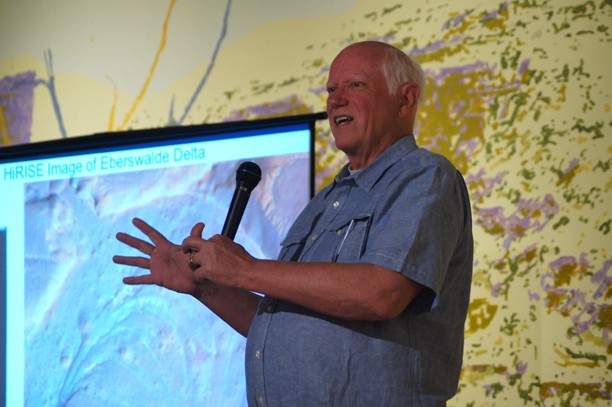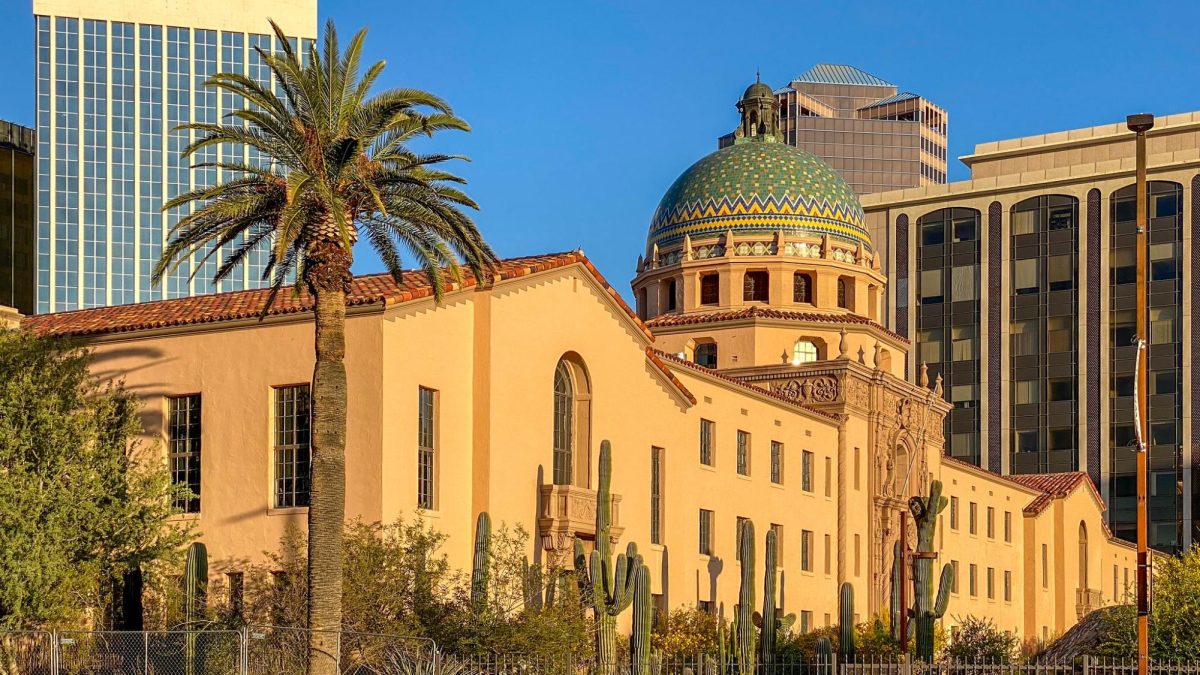Recent research has begun to unravel the mystery behind the red planet.
Peter Smith, principal investigator for NASA’s Phoenix Mars Mission and senior research scientist at the University of Arizona’s Lunar and Planetary Laboratory, presented research and photos that demonstrated why Mars may not be the dry desert once thought.
Smith discussed his research with members of the community Thursday evening in a lecture titled “Is Mars a Desert?”
Mars is currently host to two rovers and three orbiters, according to Smith. These rovers are equipped with cameras that were developed at the UA.
“We’re getting a lot of information about Mars every single day,” Smith said. “In fact, the Curiosity rover has a science team of 400 scientists.”
While photos of the planet may reveal terrain not so different from some geographical locations on Earth, data collection from the rovers has shown that Mars is home to large amounts of ice underneath its red soil.
“People like to say Mars is … ironic, because it keeps fooling us,” Smith said.
One of the first photos taken by a rover shortly after landing, revealed a shelf of sedimentary rock formed by water. Other photos revealed evidence of river valleys, gully deposits, ravines and sand dunes.
A closer analysis of the soil by a rover showed that the soil is sticky, indicating it has been cemented by carbonates, formed by mixing water with soil.
“You have to imagine this entire scene as far as you can see is really ice with a little bit of soil,” Smith said. “This is why we didn’t know about it for so many years, all those times of photographing Mars.”
Several artists also attended the lecture, hoping for some inspiration.
“I just was overwhelmed by the textures of the surface, how the light struck the ground, and you know the dunes, and just the wind – what it does,” said Jane Herrick, a fiber artist and painter, after seeing photos of Mars.
Clare Benson, a graduate student studying photography, said she enjoys learning about astronomy regardless of whether or not it becomes part of her artistic work.
“I think it’s really fascinating, and I think that’s what sort of brings it into my art,” Benson said.
The lecture was part of the “Broken Desert – Land and Sea” exhibit at the UA Museum of Art. The exhibit is the UA’s contribution to Desert Initiative: Desert One, an exploration of the Mohave, The Great Basin, The Sonoran and the Chihuahuan deserts. The series ranges across five states, and is a collaboration of more than 30 museums, cultural centers, universities and public centers, according to the UA Museum of Art’s website.
The next lecture, “The Rillito River Project” will take place on Feb. 21.









